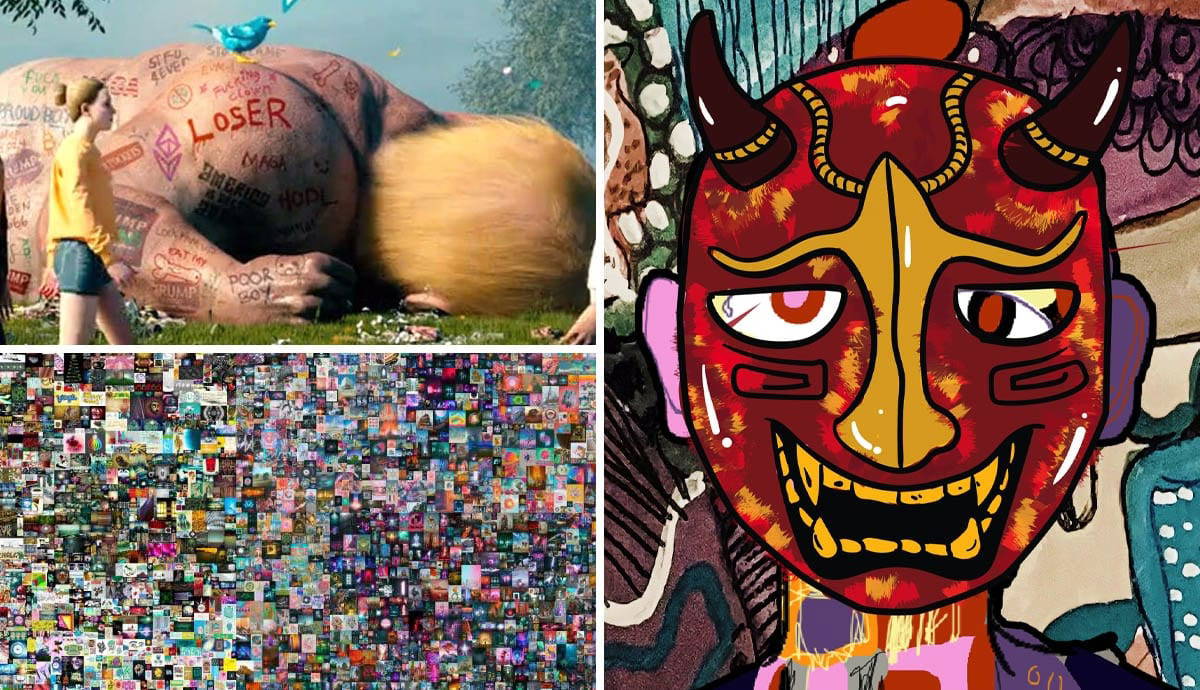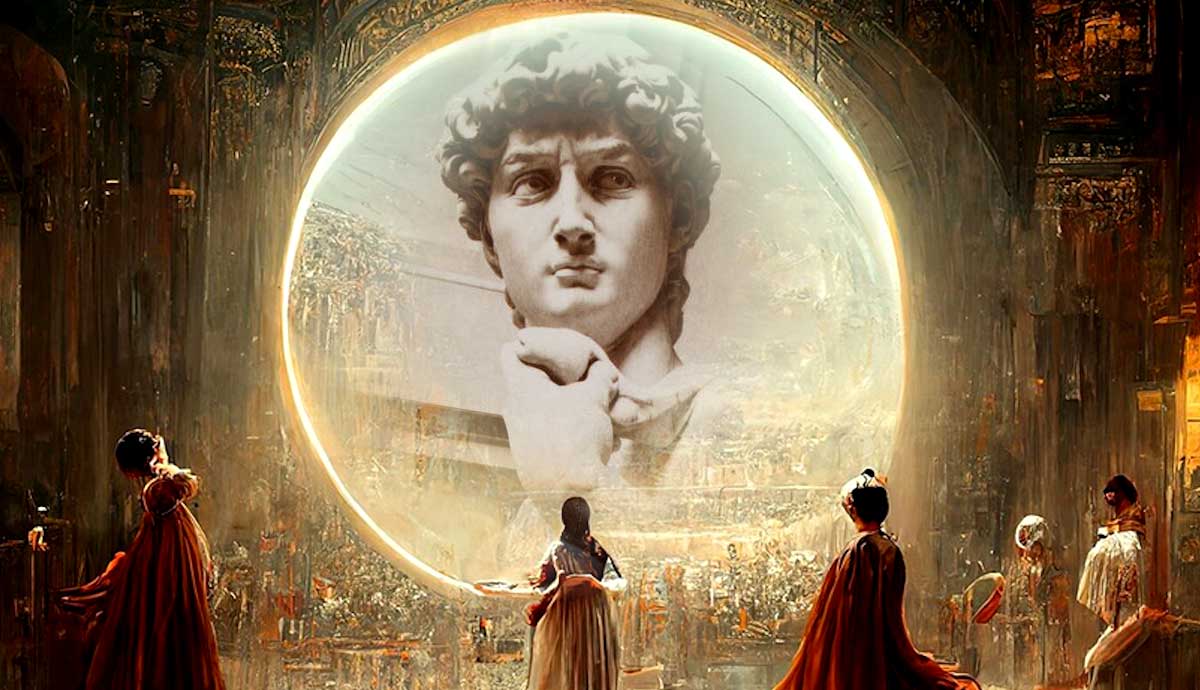
The growing number of digital art sales and the increasing prices people are willing to pay for NFTs have caught the attention of more traditional collectors and dealers. 2020 saw the world working from home and socializing through a screen, so it was only going to be a matter of time before the trend towards living life virtually took hold of the art market too. It still came as a shock when a piece of digital art sold at Christie’s in March 2021 for a staggering $69m. What about a JPG file that could have attracted such extraordinary bids? Read on to discover what an NFT is, how it is affecting the auction results, and where this trend is headed.
What is an NFT?

NFT technically stands for ‘non-fungible token’, although that hardly makes it any easier to understand exactly what these things are. ‘Fungible’ goods are those which you exchange for another identical item: you can exchange one dollar for one dollar, or trade one bitcoin for another. ‘Non-fungible’ goods aren’t like-for-like exchangeable. The analogy most often used is trading cards; when you exchange your Pikachu for a Bulbasaur, you’re trading one thing for something different.
NFTs are supported by a blockchain, and most of them are linked to the blockchain behind the Ethereum cryptocurrency. According to Ethereum, “NFTs are tokens that we can use to represent ownership of unique items. They let us tokenize things like art, collectibles, even real estate. They can only have one official owner at a time and they’re secured by the Ethereum blockchain – no one can modify the record of ownership or copy/paste a new NFT into existence.”

Although anything digital can be turned into an NFT, the greatest explosion in public interest has occurred in the world of art. In 2017, CryptoKitties emerged, a series of blockchain-backed cartoon cats. The sale of one such image for $100,000 in the December of that year heralded the beginning of a new era for the industry and for auction results. Since then, interest and trading in digital artwork has boomed; even historic auction houses like Christie’s have jumped on the bandwagon, selling the world’s most expensive NFT in March 2021 and accepting payment in Ethereum.
NFTs are attractive to both those who create digital art and those who collect it. For artists, the tokens have an optional feature that means that they can get paid every time their artwork changes hands, not simply once when they initially part with it.
NFT mania has also created a space where more diverse pieces of art have become attractive, have market value, and achieve big prices in auction results; from GIFs to cartoons, it seems unlikely that these digital artworks would sell as well in another form, such as downloadable stickers. For buyers too, NFTs offer a range of benefits. The blockchain behind each one provides security, as well as proof of authenticity and ownership, which protect against theft and forgery.
How is Digital Art Changing the Industry?

There are undoubtedly some significant criticisms being leveled at NFTs, mostly coming from those who fail to understand why someone would part with a ton of cash for an image that can be downloaded, or copy-pasted, by someone else at the click of a button. Some may argue, however, that in this respect NFTs for digital artwork aren’t so different from the more traditional forms of transaction.
People and institutions have shown themselves willing to part with extraordinary sums of money for physical masterpieces, even though anybody can buy a high-quality print or replica which would require an expert analyst to spot the difference. Why? For the ownership of the original. Likewise, anyone can copy a digital artwork, but only one person can own the original.
Detractors may still argue that the reason one pays $450m for the Salvator Mundi or $180m for Picasso’s Les Femmes d’Alger is because of the transcendent quality bestowed on the canvas and oils by the knowledge that these great masters interacted directly with them. NFT owners might respond that the creators of digital artwork also interacted directly with the pixels that are now theirs. The question is one of value: what makes art valuable, and do the same rules apply to the digital as to the physical?

Certainly, the lack of tangible work has not dissuaded the hordes of supporters who have invested in NFTs over the recent years. The value of crypto-traded digital art has soared to prices that are entirely disproportionate with the rest of the art market: it is hard to imagine a cartoon drawing of a cat making waves with auction results, but CryptoKitties routinely sell for six figures. It is no wonder that more traditional creators, institutions and dealers are taking notice of these auction results.
Damien Hirst is one of several renowned artists dipping their toes in the world of NFTs, and Christie’s digital art specialist, Noah Davies, recently acknowledged that “the potential for it to disrupt the traditional art auction model is humongous.”
As well as providing artists with new opportunities and buyers with additional security, NFTs offer art dealers and auction houses a way of trading in highly valuable pieces of art with little cost to themselves. Gone are storage, handling, and logistics fees, which can easily reach six figures when it comes to some of the most valuable items. While he maintains that NFT digital art will never replace more traditional forms of art like paintings and sculptures, Davis is confident that Christie’s will be offering more NFTs in the near future.

Despite these positive statements, NFT-mania has also resulted in some worrying consequences. On 3rd March 2021, a group of “tech and art enthusiasts” uploaded a video to YouTube showing one of their members burning a limited edition Banksy print; Morons had originally been issued in 2006 in a run of 500, each of which is easily worth ten figures. Before destroying it, they had created a single digital copy, a 1 of 1 NFT named Original Banksy Morons, which they subsequently sold for $382,000. The buyer was an NFT collector known only as ‘GALAXY,‘ who immediately put the piece up for sale again.
A clever stunt, performance art, or a wanton act of destruction? This event should encourage us to question the more detrimental effects that NFT artwork, and its adherents, might have on the world of art.
5 Interesting NFT Sales and Auction Results:
5. #896775, CryptoKitty

In 2008, a user named Rabono paid 600 Ethereum, then $172,000, for CryptoKitty #896775, giving a whole new meaning to the term ‘crazy cat person’. It was the first major sale of one of these cartoon kittens for several months and lit a fire that is yet to be extinguished. Likened to rare baseball cards in articles at the time, most reporters could not wrap their heads around why someone would part with such a huge sum of money for a digital token of a collectible cat. What they did not foresee was that, when vast numbers of people began to take interest in such tokens, their market value would shoot up, as it has with crypto-backed investments of all sorts.
4. Cryptopunk #3100, Anonymous, 2017

Another company that has achieved great success in the field of NFT artwork is Larva Labs, which has created a wide range of unique characters to be collected and traded. Although these might look more like the pixelated figures of a 90s video game, the most valuable of them are worth a small fortune. The series of nine ‘Aliens’is the most expensive, with one selling in March 2021 for a staggering 4200 Ethereum, or $7.5m. In fact, Cryptopunks are the second-highest selling crypto-collectibles thus far, with sales totaling over $171m.
3. WarNymph, Grimes, 2021

Elon Musk’s partner Grimes recently sold a small collection of her digital artwork for $5.8m on the trading platform Nifty Gateway. Entitled ‘WarNymph’ the collection was composed of ten images showing scenes of winged babies brandishing weapons and fallen angels in futuristic settings. Possibly foreseeing the imaginable overlap between NFT users and sci-fi fans, Grimes appears to have timed and targeted her auction perfectly, as all the pieces were sold in under 20 minutes.
2. Crossroad, 2021, Donald Trump

On 25th February 2021, a piece by digital artist Mike Winkelmann, known as Beeple, sold for $6.6m on Nifty Gateway, making it the then most expensive NFT ever traded. Entitled Crossroad, it is a clip showing former US President Donald Trump lying naked on the ground covered in graffiti, while anonymous characters walk by casually.
The lot initially auctioned by Beeple in November 2020 had two titled: Biden Win or Trump Win. The artist said that what the piece displayed would be different depending on the outcome of the election. Whether the victorious Trump would have been quite as successful as this defeated version is a mystery, but the success of the NFT shocked even Beeple himself. Following the resale of the clip for $6.6 million, the artist tweeted that he was “absolutely fucking speechless” about this auction result.
1. Everydays: The First 5000 Days, Beeple, 2021

Blowing all previous NFT sales out of the water is another digital work by Beeple. Beginning in 2007, the artist created one image every day, from drawings to photography to digital renderings, which he simply titled the Everydays. The purpose of the project was to hone his creativity and improve his artistic skills, but in doing so he incidentally created the most valuable stock of digital art available.
The first 5000 Everydays were compiled into a single piece, ordered in chronological sequence, which reveals not only the progression of Beeple’s style and skill but also a commentary on the evolution of society, with political and cultural events playing a prominent role. When the piece was offered at Christie’s in March 2021 as an NFT jpg file, bidding was set to start at only $100. By the end of the two-week bidding period, however, Everydays had hit upon a record price of $69m. If Beeple was shocked by the auction result of Crossroad, one can only imagine his reaction to this triumph.
Where is NFT Heading?

As with all crypto-trading, the future of NFT art is uncertain: is blockchain-backed artwork here to stay? Is it going to take over from mainstream art, or stay confined to a small but wealthy circle of crypto-fans? Will long-established dealerships and institutions be won over by the low-fees involved in trading NFTs?
If the upward trend in NFTs in the art industry continues, we may find ourselves redefining and re-evaluating the meaning of art itself. If the value of a piece is no longer based on its artistry and originality, as much as it is on its rarity and popularity, the result would be a revolution in the way we perceive art. For some, this marks a point of progress in the evolution of the industry, but for many others, the intrinsic relationship between object and viewer that makes art so special will be lost, perhaps forever.
Digital artwork has its supporters and its doubters, but all are agreed that it will continue to play an important and no doubt increasing role in the art market for the foreseeable future.










